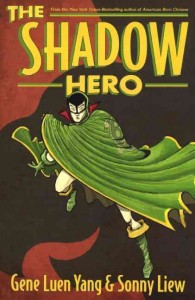 Despite being abandoned by her Danish mother when she was an infant and her Chilean immigrant father’s absence working as an international airline pilot, Maya was raised by her grandparents with spirited enlightenment and fiercely bolstering love. She was propped to have sound character, and her future held so much promise, until her Popo died when she was fifteen. Popo was her Nini’s second husband, but his presence meant the world to Maya. He had promised, “I swear I’ll always be with you.” Popo was a remarkably attentive surrogate parent to Maya, but following his death, whatever threads held her in check were unraveling at an alarming rate. The trio formed with her two girlfriends styled themselves as the “Vampires” and challenged each other to commit increasingly risky criminal acts and venture into dangerous sexual territory. By the time Maya is nineteen and living on the streets of Las Vegas, by the time she phones home, she’s on the run from criminals and the law. As she’s ushered onto a plane to exit the country and ride out the danger, her grandmother hands her a notebook for writing out her troubles as a tool for recovery, or as her Nini says it,
Despite being abandoned by her Danish mother when she was an infant and her Chilean immigrant father’s absence working as an international airline pilot, Maya was raised by her grandparents with spirited enlightenment and fiercely bolstering love. She was propped to have sound character, and her future held so much promise, until her Popo died when she was fifteen. Popo was her Nini’s second husband, but his presence meant the world to Maya. He had promised, “I swear I’ll always be with you.” Popo was a remarkably attentive surrogate parent to Maya, but following his death, whatever threads held her in check were unraveling at an alarming rate. The trio formed with her two girlfriends styled themselves as the “Vampires” and challenged each other to commit increasingly risky criminal acts and venture into dangerous sexual territory. By the time Maya is nineteen and living on the streets of Las Vegas, by the time she phones home, she’s on the run from criminals and the law. As she’s ushered onto a plane to exit the country and ride out the danger, her grandmother hands her a notebook for writing out her troubles as a tool for recovery, or as her Nini says it,
take advantage of it to write down the monumental stupidities you’ve committed, see if you can come to grips with them.
In the audiobook version I enjoyed, as the narrator began speaking in the voice of the 19-year-old female main character in Maya’s Notebook, she sounded far too mature, using unrealistic vocabulary and sounding too worldly. Soon, however, that didn’t matter because I was spellbound by Maya Vidal’s troubled past. She’d experienced complex problems and was running from drug lords, international criminals, and the FBI, and she comes from a highly unusual family; clearly her life was more complicated than an average teen girl’s. She was sent by her Chilean grandmother, her Nini, to Chiloé Island, perfect as a place for banishment or exile, to ride out the danger with an old friend of Nini’s, Manuel Arias. Manuel is a man with a mysterious and painful past as well. The narrative floats easily between Maya’s present in Chiloé and her past in Berkeley, California, then a rehab academy in Oregon, then in Las Vegas where she reaches the darkest pit of her degradation and suffering. Just when you think her story has been told already, it just gets deeper and more layered.
Maya’s Notebook is an Adult Fiction title which would likely appeal to many older teens, but the book contains very graphic scenes of criminality, violence (both sexual and drug-related), sexuality, and extreme drug use. It’s available in the WRL collection via regular print, audiobook on CD, e-audiobook, and in large print.


 Refreshing and reinventing old superheroes has become somewhat fashionable recently, with rather mixed results. Some characters, like Batman, have seen so many iterations that it is difficult to separate them all, or find new ground to cover without being completely repetitive or utterly discarding canon. One good thing that has come out of this trend is the resurrection of old characters that never caught on, but were worthwhile for one reason or another.
Refreshing and reinventing old superheroes has become somewhat fashionable recently, with rather mixed results. Some characters, like Batman, have seen so many iterations that it is difficult to separate them all, or find new ground to cover without being completely repetitive or utterly discarding canon. One good thing that has come out of this trend is the resurrection of old characters that never caught on, but were worthwhile for one reason or another. As someone once quipped, “they don’t have issues, they have an entire subscription.” Six dogs of varying breeds make up this sled dog team, and each has their own flavor of neurosis. Dolly is the lead dog, and is consumed with an existential crisis, constantly wondering why she was chosen to lead, and whether or not she has the skills to be successful. Winston is a purebred Samoyed, and bears the heavy burden of his blue blood with mounting desperation as his chances of passing on his valuable genes seem slimmer as each season passes. Buddy, a strong but not particularly bright wheel dog, has been used several times for mating, but this has confused him about his exact relationship with the mother of his pups. Venus, Buddy’s unwilling partner in puppy making, has to fend off his amorous advances and her increasing frustration with her lack of choice in these matters. Guy is determined to take over the lead position from Dolly and is willing to manipulate the other dogs into helping him. And finally there is Fiddler, part philosopher, part devil’s advocate; he seems to be able to figure out everything, except what he actually wants for himself. The owners of this motley crew are a man and a woman who intentionally moved far away from all other people, and are dealing with their enforced solitude with varying levels of success.
As someone once quipped, “they don’t have issues, they have an entire subscription.” Six dogs of varying breeds make up this sled dog team, and each has their own flavor of neurosis. Dolly is the lead dog, and is consumed with an existential crisis, constantly wondering why she was chosen to lead, and whether or not she has the skills to be successful. Winston is a purebred Samoyed, and bears the heavy burden of his blue blood with mounting desperation as his chances of passing on his valuable genes seem slimmer as each season passes. Buddy, a strong but not particularly bright wheel dog, has been used several times for mating, but this has confused him about his exact relationship with the mother of his pups. Venus, Buddy’s unwilling partner in puppy making, has to fend off his amorous advances and her increasing frustration with her lack of choice in these matters. Guy is determined to take over the lead position from Dolly and is willing to manipulate the other dogs into helping him. And finally there is Fiddler, part philosopher, part devil’s advocate; he seems to be able to figure out everything, except what he actually wants for himself. The owners of this motley crew are a man and a woman who intentionally moved far away from all other people, and are dealing with their enforced solitude with varying levels of success.
 In 1994, Robert “Yummy” Sandifer was executed by fellow members of his gang. He was 11. What was his crime? In the eyes of his killers, he was bringing too much police and media attention to their part of town. Eager to prove himself to older gang members, he had shot wildly into a group of kids playing in the street, killing a 14-year-old girl named Shavon. Yummy’s murderers were only 14 and 16 years old themselves. The shocking nature of his death as well as his life landed his mugshot on the cover of Time magazine and a mention by President Bill Clinton in a speech addressing the three-fold increase in homicides in Chicago since 1980.
In 1994, Robert “Yummy” Sandifer was executed by fellow members of his gang. He was 11. What was his crime? In the eyes of his killers, he was bringing too much police and media attention to their part of town. Eager to prove himself to older gang members, he had shot wildly into a group of kids playing in the street, killing a 14-year-old girl named Shavon. Yummy’s murderers were only 14 and 16 years old themselves. The shocking nature of his death as well as his life landed his mugshot on the cover of Time magazine and a mention by President Bill Clinton in a speech addressing the three-fold increase in homicides in Chicago since 1980.











